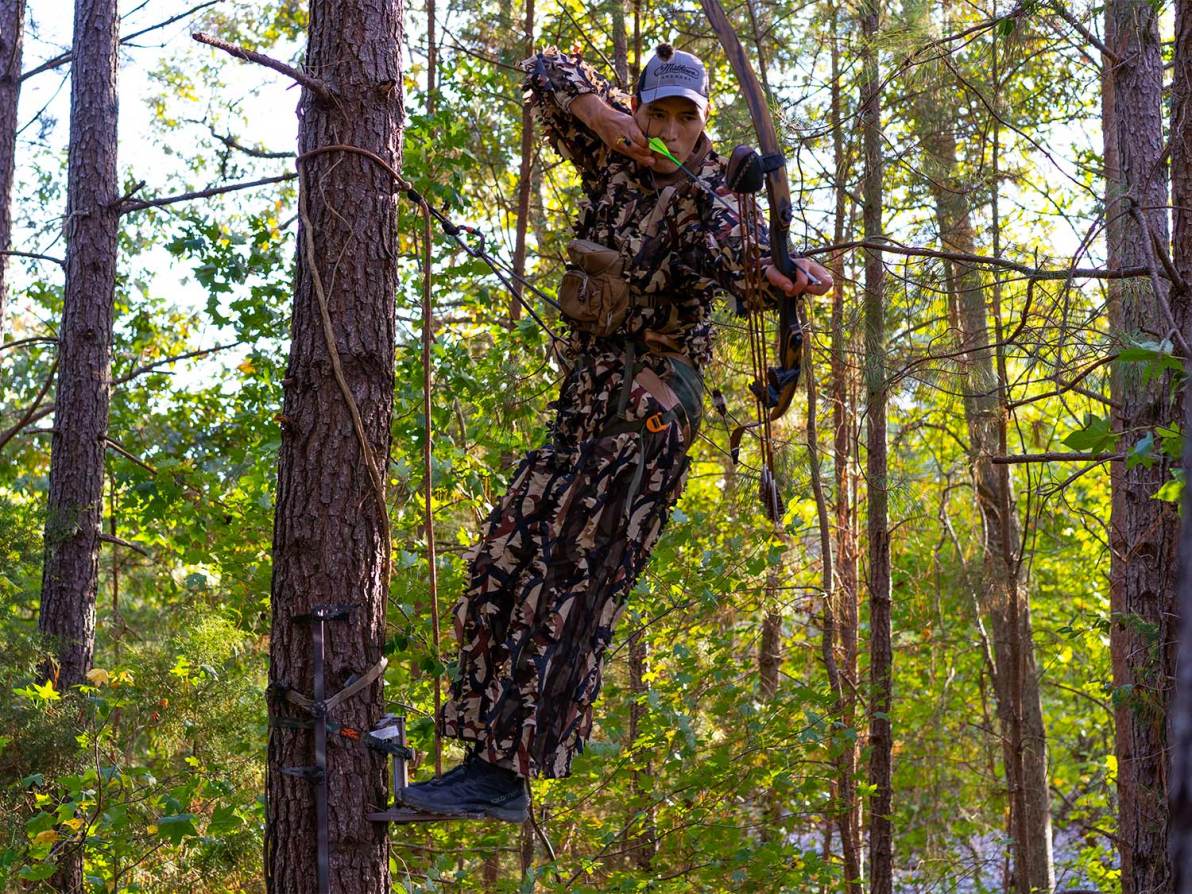We may earn revenue from the products available on this page and participate in affiliate programs. Learn More ›
Early in my bowhunting career, I set up a ladder stand on top of a ridge that had oaks and plenty of deer sign. On opening morning, I watched a deer parade go down a trail that was 20 yards out of range. I sat in that stand several more times and never had a deer come within bow range. If I had a mobile stand, I could have easily adjusted my hunting strategy to move closer to the active trail.
Mobile hunting for whitetails is all about making aggressive moves and constantly hunting fresh spots. Mobile hunters carry everything they need for a hunt so they can set up on the fresh sign and easily adapt to the conditions. That’s why they need lightweight and easy to use hunting platforms.
That old faithful ladder stand just won’t cut it when you need to slide another 100 yards closer to a bedding area. A mobile setup is also great for public land where you can’t or don’t want to leave your stand. It’s also less expensive than buying multiple permanent stands.
There are three main choices for the mobile hunter: a climber, a hang-on stand, and a tree saddle. I’ve hunted from all three of these platforms in my search for the perfect mobile hunting set up. To help with this comparison, I also reached out to Aaron Warbritton, from The Hunting Public YouTube channel. He’s been at the tip of the spear of the mobile hunting trend and offers a wealth of experience. Together we’ll see how each platform stacks up against each other in five categories: weight, setup, huntability, comfort, and price.
Weight
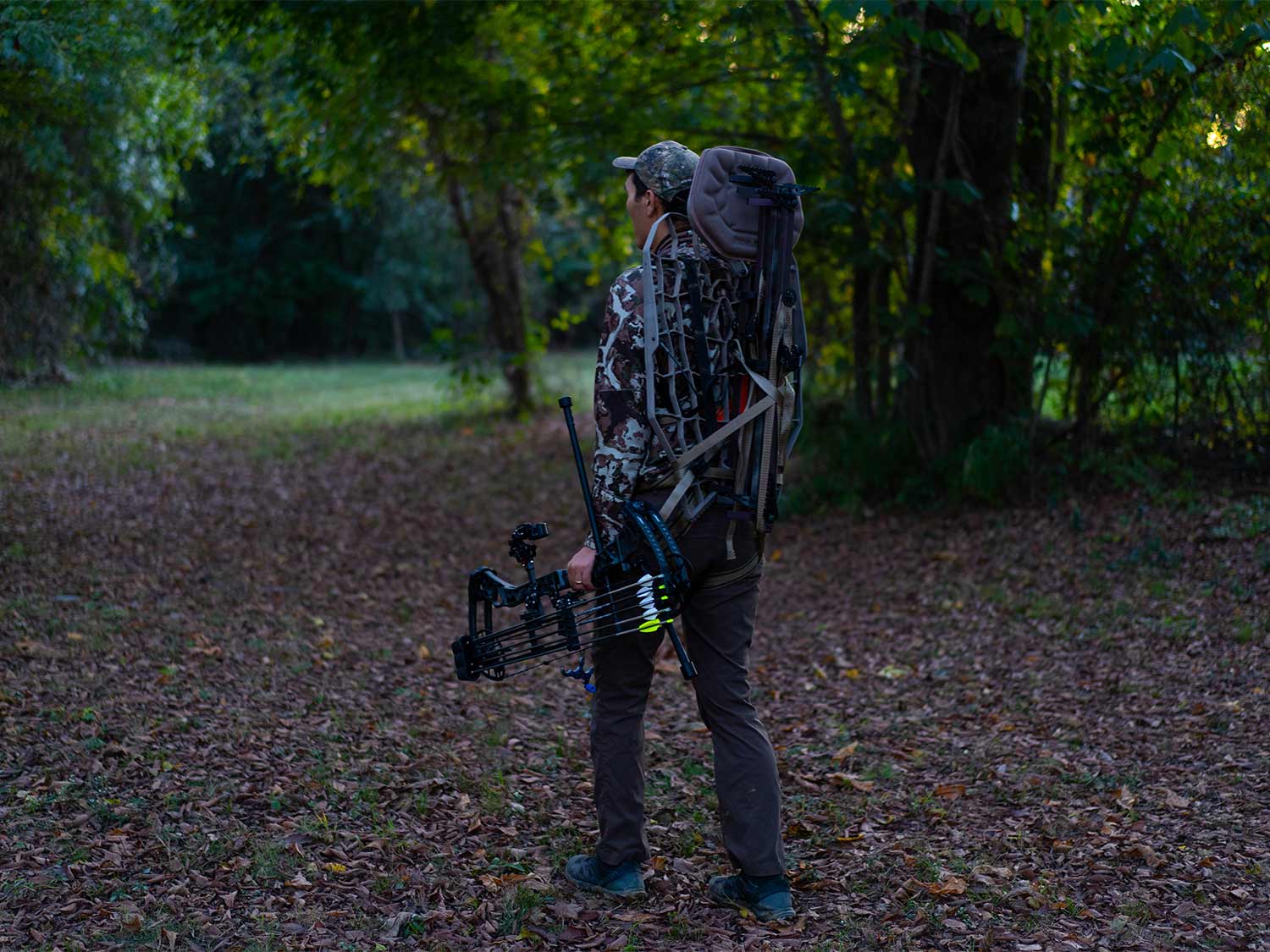
A heavy pack can feel fine for a few minutes, but when yards turn to miles, you feel every pound. For hunting deep in public land, a lightweight set up is a must. Weights will differ depending on the model of stand and climbing method. These weights will give you an idea of what you can expect a complete kit to weigh. Here’s how all three systems compared:
Tree Saddle
Model: Tethrd Mantis Saddle and Predator platform.
Kit Includes: Saddle, tether, platform, lineman’s belt, and three climbing sticks.
Total Weight: 14.1 pounds. *The three climbing sticks separately weigh 7.5 pounds.
Hang-On
Model: Lone Wolf Alpha Hang-On.
Kit Includes: Stand, safety harness, lineman’s belt, and three climbing sticks.
Total Weight: 23.9 pounds. *The three climbing sticks separately weigh 7.5 pounds.
Climber
Model: Summit Explorer SD Climber
Kit Includes: Stand and safety harness
Total Weight: 24.2 pounds
If weight is your primary concern then a saddle is the clear winner. You can even make the saddle lighter by using a lighter climbing system.
Getting Set Up
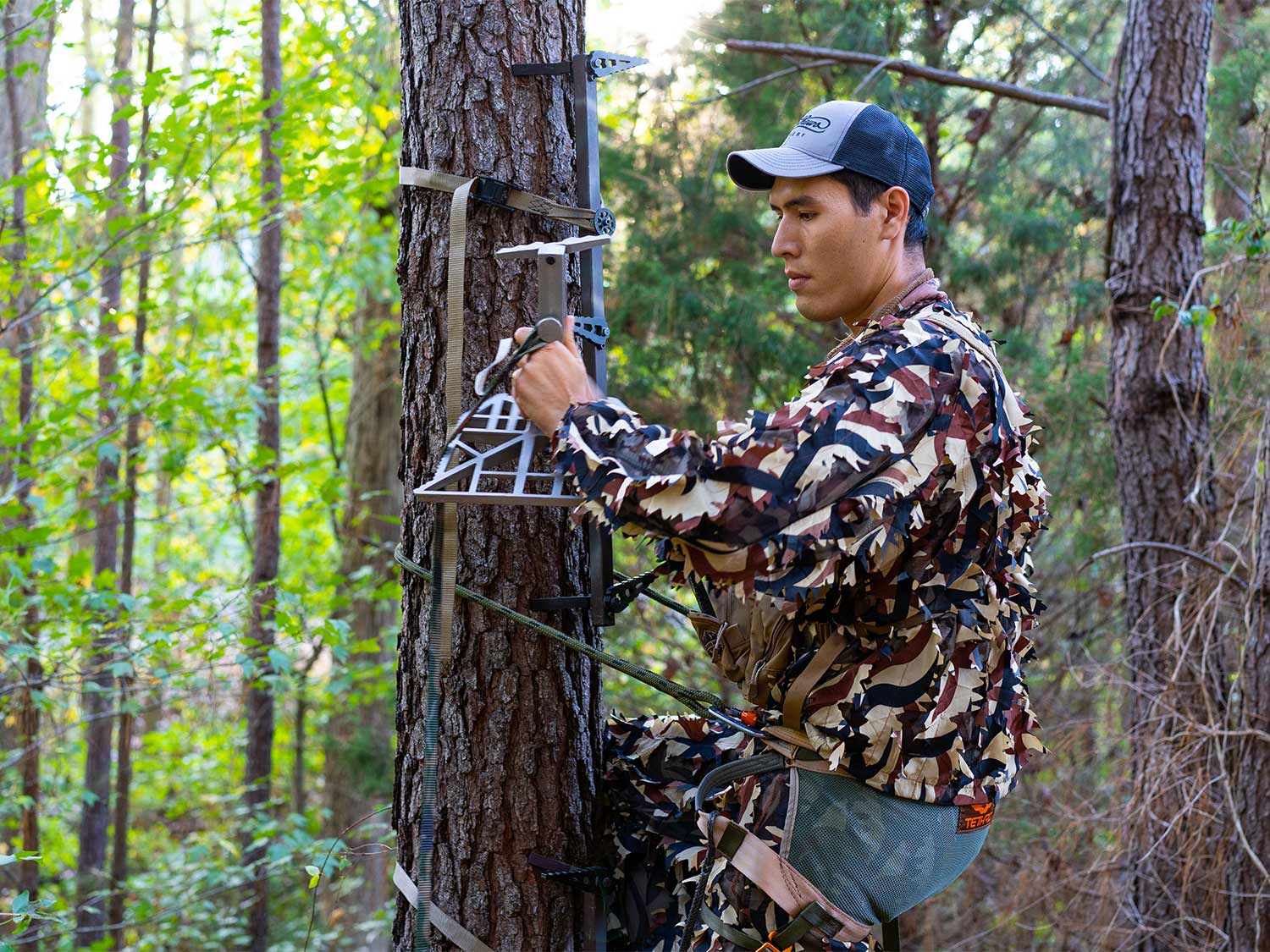
Weight isn’t only a factor when carrying a stand, it also matters for setting it up. This is especially true when hanging a saddle platform or hang-on stand. When you climb to the height you want to hunt, you have to hold the stand or platform in one hand while tightening the stand’s straps with the other. A light platform for a saddle, like the Predator platform (3.3 pounds), is much easier to hang then the heavier base of a hang-on stand (12.2 pounds).
“I would say that now 90 percent of my hunts are with a saddle and a platform; just because it’s lighter, the footprint is smaller, and it’s faster for me to set up,” Warbritton says.
With a saddle and a hang-on, you’ll need your choice of hang-on stand and a climbing method. I use the Lone Wolf Alpha stand and climbing sticks. The stand and sticks were designed to pack neatly together making it a very convenient and easy to use system. You can climb the tree and hang your stand in one trip with practice and some paracord. I’m pretty slow and careful when climbing and it usually takes me 15 to 20 minutes to climb and get set. The hang-on is fast, but the saddle is slightly faster and easier for me to set up.
A climber is attached to the tree before you climb and doesn’t require climbing sticks. There’s also no platform to hang once you reach hunting height. You can scale a tree fairly quickly with one, and it’s a less technical climb than a saddle or platform. However, that speed comes at the cost of versatility. Climbers need a straight, limbless tree, which isn’t always available. I much prefer the versatility of other platforms that allow me to climb almost any tree. If you live in an area that has a lot of trees suitable for a climber, then these negatives might not be such a big deal.
Huntability
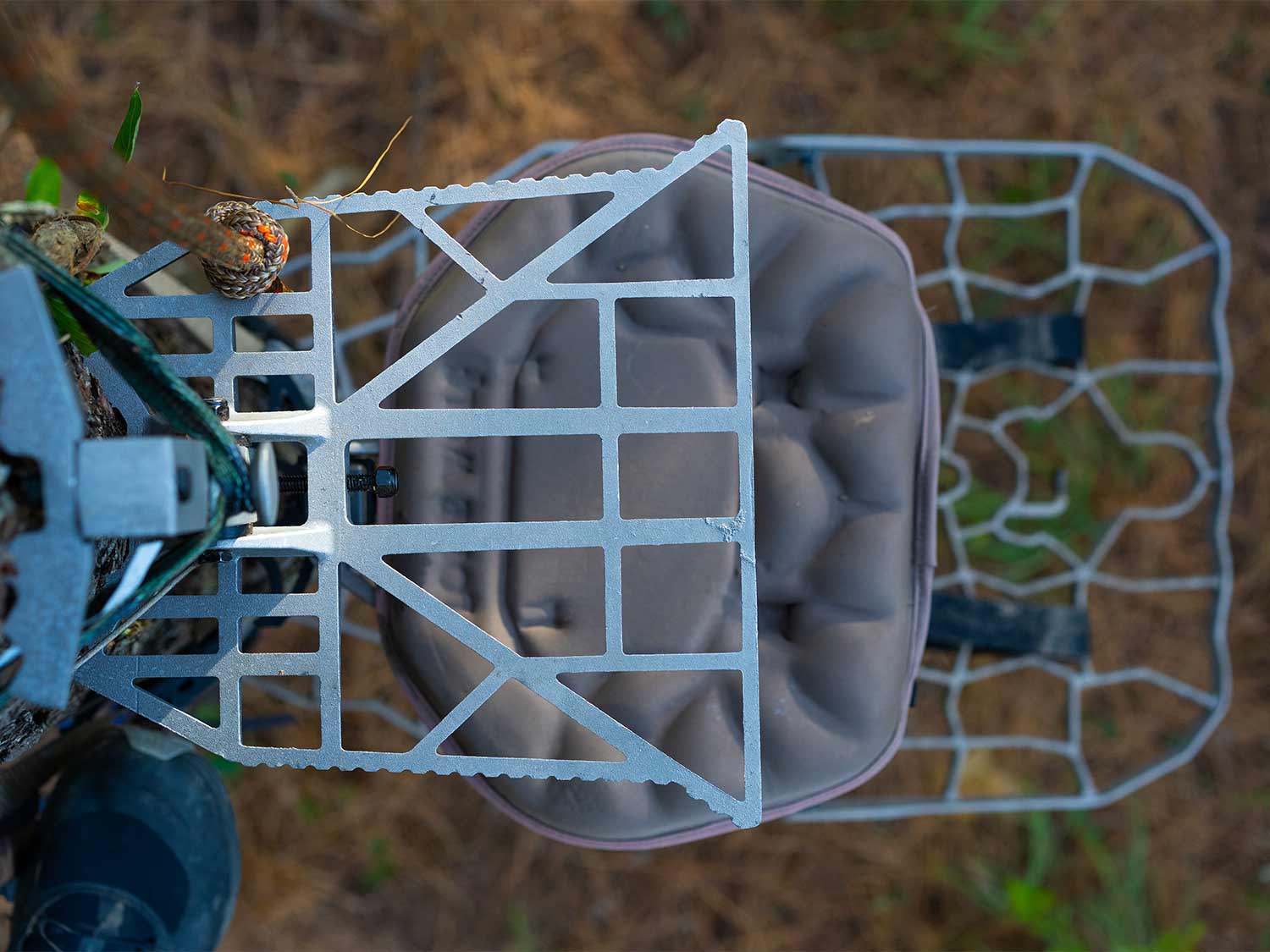
The size of a climber is another negative. “I haven’t hunted out of climbers a ton, but I’ve hunted out of them enough to know I don’t want to use them. Their footprint is so big that when you’re packing them in, the stand gets tangled on stuff,” Warbritton says.
Another reason to move away from climbers is the noise they make when climbing. It’s discouraging to put a lot of effort slipping into your spot, but then make a scraping noise as you ascend into position. This is especially true when hunting close to bedded deer.
By comparison saddles and hang-ons are much stealthier to carry and set up. If you are proficient with either of them, you can be up a tree within earshot of a bedded buck without issue.
Proficiency doesn’t come overnight with any of these platforms, but tree saddles especially take time to learn. The saddle has a steeper learning curve because it’s so different than a traditional treestand. The first time you lean back into your saddle it might feel like leaning back on a rocking chair at the edge of a cliff. However, that uneasy feeling quickly fades and I personally feel much safer in my saddle than I ever felt in a hang-on or climbing treestand. That security comes from the fact that if you fall off your platform it is extremely easy to get back on because the tether is always pulled tight—making the drop almost unnoticeable.
Beyond the saddle’s learning curve, the hang-on and saddle are neck and neck when it comes to packing, setting up, and hunting out of them.
“They’re really close. They definitely have their differences. Whichever one that you decide to use, you need to practice with it. Whether you’re using climbing sticks or strap on steps, you need to practice packing, hanging, and then shooting out of them because they’re different,” Warbritton says.
Comfort
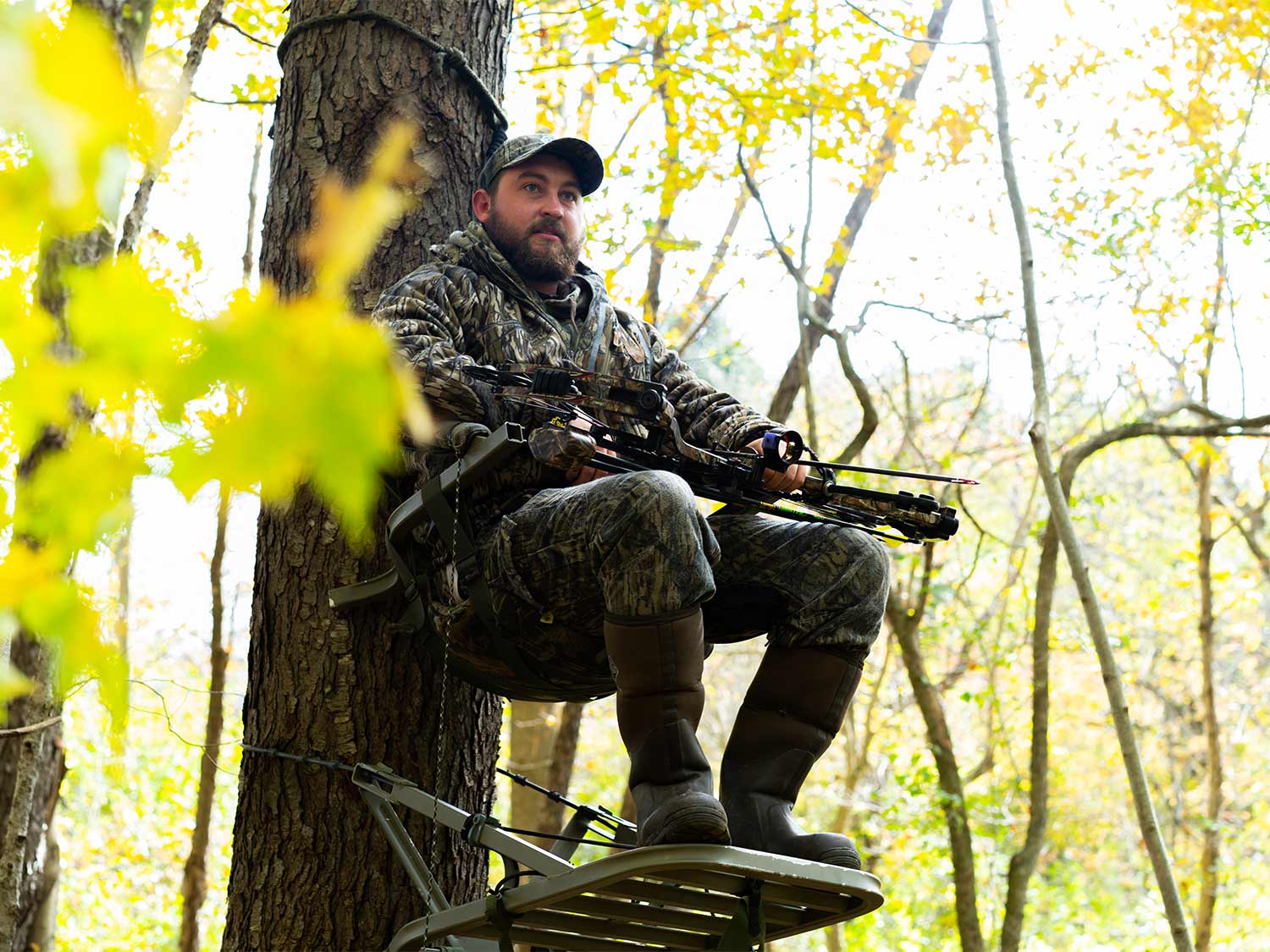
When the rut kicks in and you basically live in a tree all weekend, a comfortable stand is a must. While all three mobile options are pretty comfortable, the standard treestand seat is hard to beat. Warbritton agrees with that preference.
“The only thing I like about a treestand is if I’m going to sit all day, I’d rather have a treestand,” he says.
Tree saddles are comfortable, but a lot of the comfort in a saddle depends on your tether height because it controls the weight distribution. You’ll need to find a sweet spot that works for you and that takes some practice. I haven’t found that sweet spot for comfort just yet, but I do think that I’ll eventually get the saddle to be as comfortable as my treestands.
Price
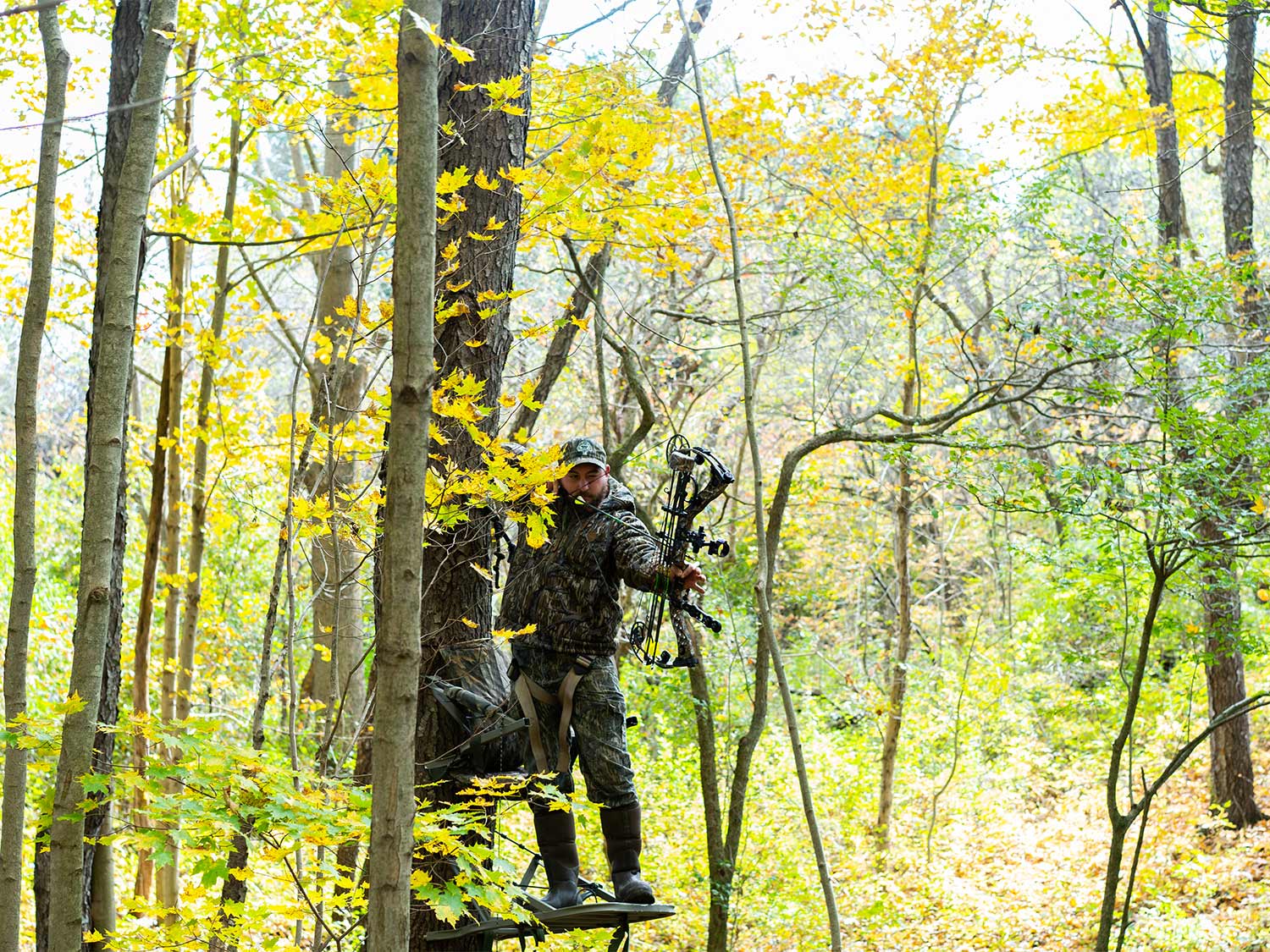
Like weight, the price will depend on the manufacturer and model. Just like our weight evaluation, we’ll compare the products I have personally owned and used.
A Tethrd mantis tree saddle, platform, lineman’s belt, tether, and a set of Lone Wolf climbing sticks will run you around $650. Without climbing sticks the system is about $500. If you want to add some accessories like Ropeman ascenders, pouches, and a recliner, you’ll be looking at spending around $900. It’s not a cheap investment, and you’ll have to decide if the above-stated benefits outweigh the cost.
Hang-ons and climbers are less expensive. A premium climber like the Summit Explorer SD and Hunter Safety System safety harness will run you around $450. A Lone Wolf Alpha hang-on, climbing sticks, Hunter Safety System safety harness, and lineman’s belt will set you back around $500. Again, prices will vary depending on what models, climbing methods, and add on accessories you choose.
What is the Best System for You?
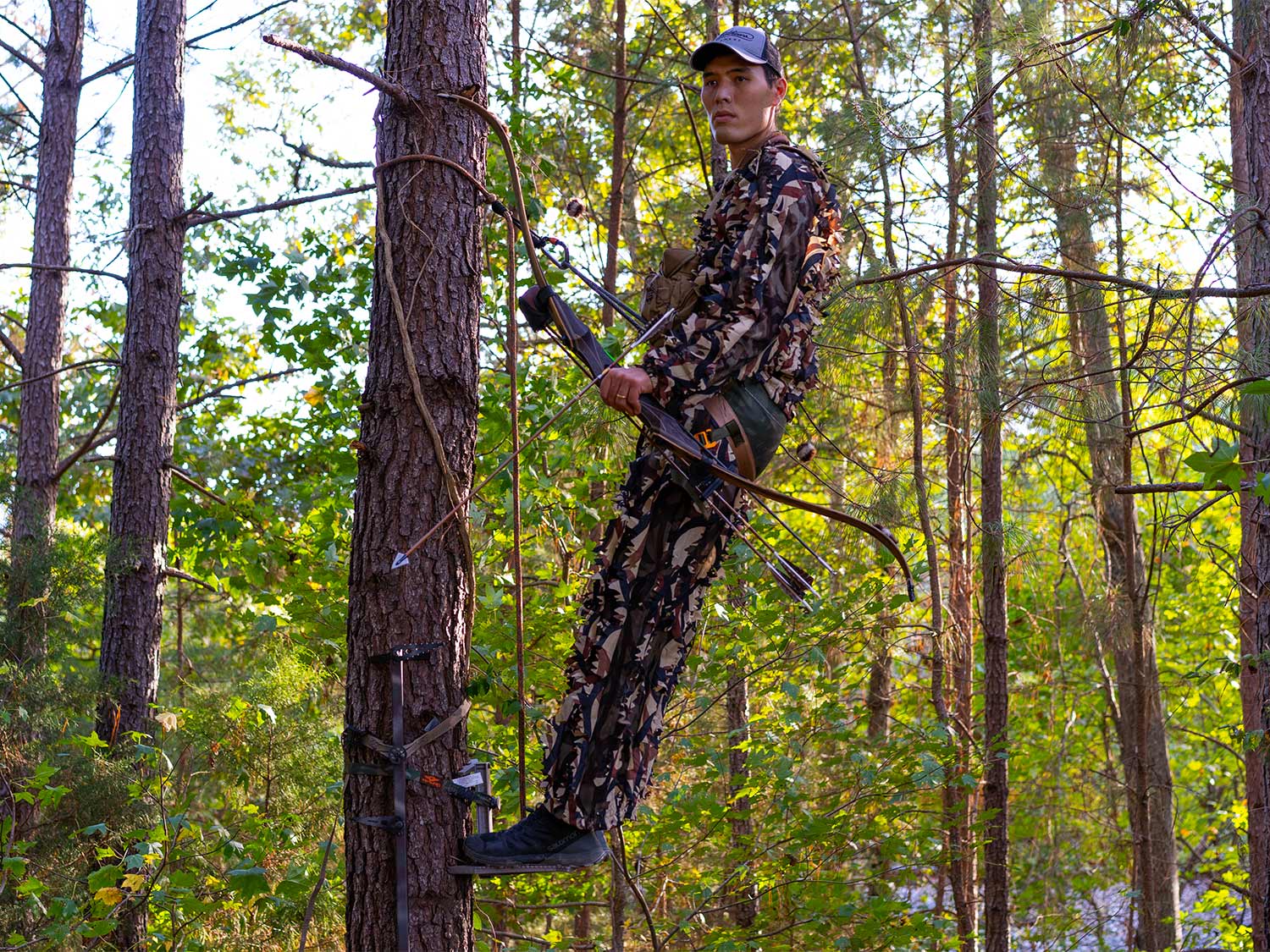
Warbritton and I both prefer tree saddles because they are lightweight, easy to pack, fast to set up, and make mobile hunting easier. Is it the best system for you? You’ll have to evaluate the features against your hunting needs to make that decision. The good thing is, all three systems will give you the ability to be a mobile hunter.
“I just think that either way you’re going to be hunting mobile and you’re going to have a lightweight setup that’s going to allow you to see more country, learn more stuff, and potentially kill more deer,” Warbritton says.
